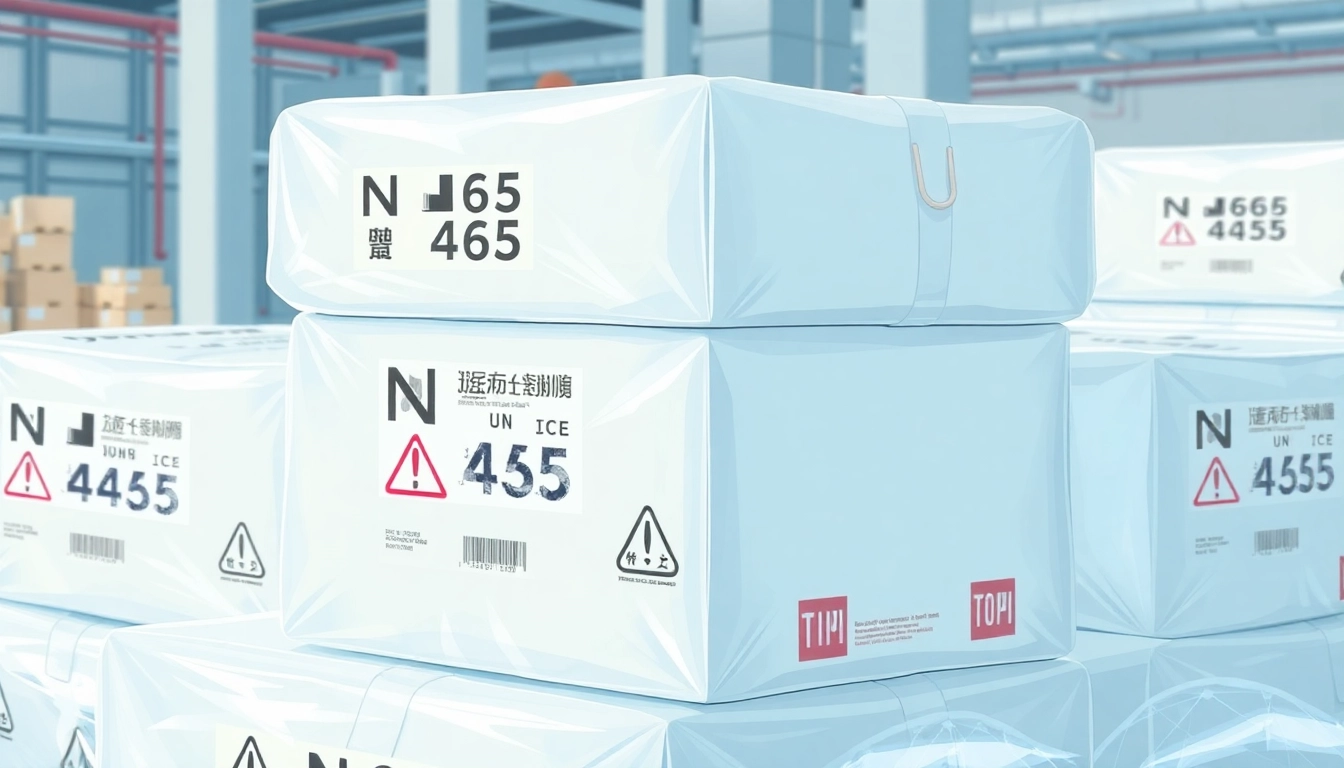Understanding UN 1845 and Its Hazards
Definition and Overview of UN 1845
UN 1845 refers to carbon dioxide, solid, commonly known as dry ice. This substance is classified as a hazardous material due to its unique properties and the risks associated with its transport and storage. Dry ice is primarily used to keep items cold, particularly in shipping perishables such as food and medical supplies. Given its hazardous classification, it falls under the jurisdiction of various regulatory frameworks set forth by agencies like the Department of Transportation (DOT) in the U.S. and aligns with international standards governed by the International Air Transport Association (IATA).
Classification of Dry Ice as a Hazardous Material
Dry ice is classified under Class 9 of the hazardous materials regulations. This category covers miscellaneous hazardous materials that present a danger during shipping and handling. The specific classification of dry ice acknowledges its potential risks, such as asphyxiation in confined spaces due to carbon dioxide sublimation, and its ability to cause frostbite upon contact with skin due to its extremely low temperature of about -78.5 degrees Celsius (-109.3 degrees Fahrenheit).
Safety Precautions for Handling UN 1845
When handling dry ice, safety precautions are paramount. This includes using insulated gloves to prevent skin contact, ensuring proper ventilation in storage and transport areas, and never sealing dry ice in airtight containers, which can lead to pressure build-up and explosions. Training personnel on these hazards is essential for compliance and safety. For more information on handling guidelines, visit un 1845.
Packaging Requirements for UN 1845
Essential Packaging Materials for Dry Ice
Proper packaging for dry ice is critical to ensure safety during transport. The primary materials used include polystyrene foam, cardboard with vent holes, and other insulated materials that prevent leakage while allowing gas to escape. Each package must be designed to withstand thermal stresses while maintaining structural integrity even in transit. Using packaging materials that adhere to DOT specifications is crucial for legal compliance.
Labeling Standards and Compliance for UN 1845
Labeling for dry ice shipments is a legal requirement and must adhere to specific regulations. Each package must prominently display the UN number (UN 1845) and hazard labels indicating the contents are hazardous materials. The hazard label is usually a square shape diamond and includes the numerical code 9, representing its miscellaneous hazardous classification. Proper labeling aids emergency responders in recognizing the potential dangers associated with the contents of the package quickly.
Inspection and Verification Processes
Before shipping dry ice, it is essential to conduct thorough inspections. All packaging must be checked for compliance with DOT regulations, and containers should be verified against shipping documentation. Any visible damage or non-compliance can result in penalties and create safety hazards. Regular audits of packaging procedures and training refreshers for staff can help maintain high standards of safety and compliance.
Shipping Regulations and Guidelines
DOT Regulations Concerning UN 1845
The Department of Transportation has strict regulations governing the transport of UN 1845. These regulations specify the weight limits, maximum amounts that can be shipped on passenger versus cargo planes, and necessary documentation for shipment. Shippers must also maintain records of transportation methods and ensure that all handlers are trained on the regulations pertaining to hazardous materials.
Air Transportation Rules for Dry Ice
When shipping by air, stricter guidelines apply to ensure the safety of passengers and crew from the potential dangers posed by dry ice. For instance, shipments over 5.5 pounds of dry ice are generally prohibited on passenger aircraft but permitted on cargo aircraft. This regulation stems from concerns over potential asphyxiation risks and the pressuring effects of sublimating carbon dioxide in confined spaces. It is essential to follow the IATA Dangerous Goods Regulations to ensure all air shipments comply with international safety standards.
Common Shipping Mistakes to Avoid
Shipping dry ice can be complicated, and several common mistakes can lead to legal issues or safety hazards. These include failing to use approved packaging, neglecting to complete and attach required paperwork, and improperly labeling shipments. Establishing a standard operating procedure (SOP) for handling UN 1845 shipments can help mitigate these risks. Regular training and updates on regulatory changes are also recommended to keep all staff informed and compliant.
Applications of UN 1845 in Various Industries
Food Preservation and Transport
The food industry employs dry ice extensively for preserving perishables during transport. Products such as seafood, meats, and delicate fruits can be shipped over long distances while maintaining their freshness. The use of dry ice allows for larger transit windows without compromising quality, and it is a preferable cooling agent for shipments that need to remain frozen during transport.
Medical and Laboratory Uses
In healthcare and laboratory settings, dry ice is vital for shipping biological specimens, pharmaceuticals, and other temperature-sensitive materials. The quick sublimation rates of dry ice ensure that samples are kept at low temperatures, preserving their integrity. Compliance with shipping regulations for hazardous materials is especially critical when handling biological agents or specimens.
Other Practical Applications of Dry Ice
Beyond food and healthcare, dry ice is used in various sectors, including entertainment, where it creates visual effects in performances, and in scientific research where cooling is necessary. Dry ice also finds applications in the logistics sector for maintaining cold chain transportation, ensuring that all products remain within temperature-sensitive ranges throughout the shipment process.
Best Practices for Handling and Transporting UN 1845
Employee Training and Safety Protocols
Staff training on the handling and transport of hazardous materials, including dry ice, is crucial. Employees must be well-versed in the properties of dry ice, the significance of labeling, and proper emergency response actions in case of exposure or incidents. Regular refresher courses can help ensure that all employees remain informed about best practices and regulations.
Emergency Response and Mitigation Plans
Developing comprehensive emergency response protocols is key to handling any unforeseen incidents involving dry ice. A clear plan should outline immediate actions to take in case of a spillage, accidental release of carbon dioxide, or exposure to skin. Training should include how to use personal protective equipment (PPE), such as respirators, to safeguard against inhalation of large quantities of carbon dioxide.
Monitoring and Compliance Tools
Implementing monitoring tools can help ensure compliance with safety regulations surrounding dry ice transport. Regular audits, safety drills, and compliance checks can help identify areas requiring improvement or updates. Utilizing software solutions that track shipping procedures and ensure regulatory compliance can mitigate risks associated with mishandling of hazardous materials.



